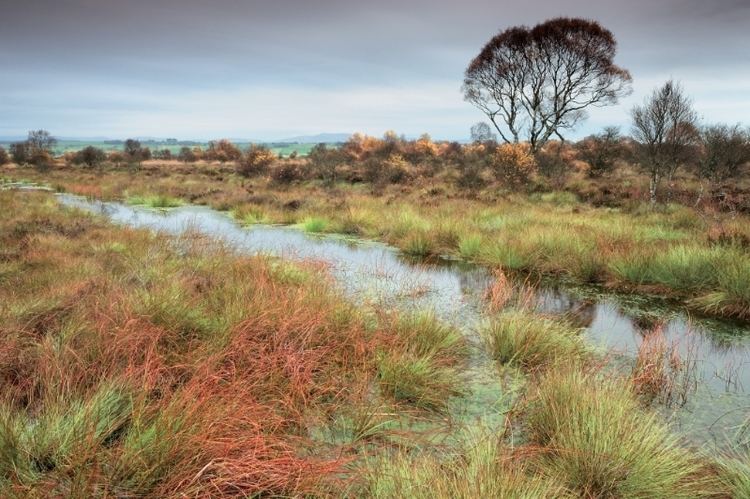 | ||
Flanders moss nnr
Flanders Moss is an area of raised bog lying in the Carse of Forth in west Stirlingshire, Scotland. The villages of Thornhill and Port of Menteith lie to the north with the villages of Kippen and Buchlyvie lying to the south.
Contents
- Flanders moss nnr
- Map of Flanders Moss Stirling UK
- Flanders moss 23 07 2013
- History
- Natural history
- References
Map of Flanders Moss, Stirling, UK
Flanders moss 23 07 2013
History
Formerly passable with difficulty, using boardwalks, during the 18th century much drainage of the land was encouraged by the lawyer, historian and improver Henry Home, Lord Kames, but a substantial portion survived this development at two sites - West Flanders Moss on the south and East Flanders Moss on the north side of the River Forth.
The Strathendrick and Aberfoyle Railway was built through West Flanders Moss. Opening in 1880, the line ran between the villages of Buchlyvie and Gartmore. In the 1970s the rest of West Flanders Moss was drained and planted with a commercial forest by the Forestry Commission, although much of the plantation is now being removed and the moss restored to its natural state.
Natural history
The eastern part of Flanders Moss is the largest raised bog in Europe to remain in a predominantly near-natural state. It is a site of special scientific interest and a was designated as a special area of conservation on 17 March 2005. Scottish Natural Heritage manages the land as Flanders Moss National Nature Reserve. Scottish Natural Heritage purchased rights on the site in 1995 and it is designated as a National Nature Reserve. Scottish Natural Heritage provides an access track, car park, viewing tower and a short waymarked trail on the eastern side of the site.
